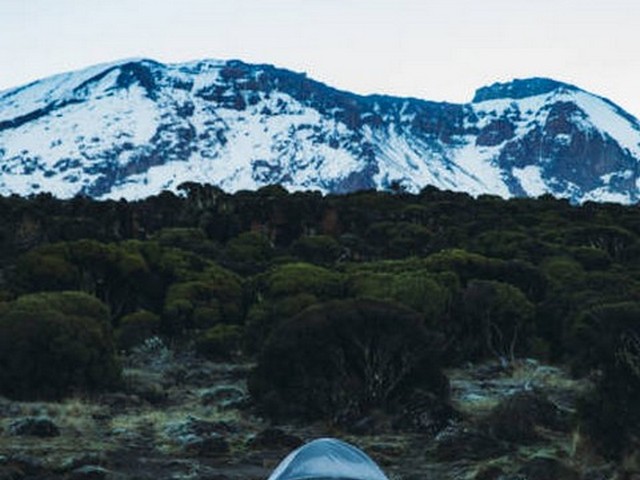Embracing Wildlife Conservation During Your Kilimanjaro Trekking Adventure
Welcome to the majestic slopes of Mount Kilimanjaro, where the spirit of adventure meets the heart of conservation. As you prepare to embark on a journey of a lifetime with the Kilimanjaro Centre for Trekking and Ecotourism (KCTE), it’s vital to recognize the role you play in preserving the stunning natural heritage of this iconic mountain. At KCTE, we believe that every trekker is not just a visitor but a guardian of the earth’s treasures. This blog post explores how you can contribute to wildlife conservation while enjoying the incomparable experience of trekking Africa’s highest peak.
Why Wildlife Conservation Matters on Kilimanjaro
Mount Kilimanjaro is not only famous for its snow-capped summit but also for its diverse ecosystems, ranging from lush rainforests to alpine meadows. These habitats are home to an array of fauna, including elusive elephants, majestic lions, and the unique Kilimanjaro shrew. Protecting these species and their habitats ensures that future generations can also enjoy and learn from these ecosystems. Moreover, conservation efforts contribute to maintaining the ecological balance, supporting climate regulation, and preserving the beauty that attracts tourists from all over the world.
Responsible Trekking Practices
Stick to the Paths
One of the simplest yet most effective ways to conserve wildlife during your Kilimanjaro trek is to stay on designated trails. Straying off the path can lead to habitat destruction and disturb wildlife, which may be nesting or feeding in off-path areas.
Manage Waste Properly
Littering is not only unsightly but can be incredibly harmful to wildlife. Animals might ingest plastic waste mistaking it for food, which can be fatal. Always carry back whatever you bring to the mountain, and make use of proper disposal facilities provided by KCTE.
Be Water-Wise
Water resources on Kilimanjaro are limited. Practice using water sparingly and avoid using detergents or soaps in natural water sources. KCTE provides guidelines on how to conserve water during your trek, helping preserve the mountain’s delicate water ecosystems.
Wildlife Watching with Care
Observing wildlife during your trek can be thrilling, but it’s vital to do so with respect for their natural behaviors and habitat.
- Keep a Respectful Distance: Always observe wildlife from a distance that does not disturb them. Use binoculars or a zoom lens to get a closer look without getting too close.
- Do Not Feed Wildlife: Feeding animals can alter their natural behaviors and diet, making them dependent on human-provided food.
- Silence is Golden: Keep noise to a minimum to avoid startling wildlife. This increases your chances of witnessing natural behaviors and ensures you do not disrupt their daily activities.
Engage with Conservation Initiatives
KCTE is actively involved in various conservation efforts and encourages trekkers to participate. Whether it’s donating to conservation projects or volunteering for reforestation, your engagement can make a significant difference.
Tree Planting: Join us in our reforestation efforts. Planting a tree during your visit not only offsets carbon footprints but also contributes to habitat restoration for Kilimanjaro’s wildlife.
Educational Programs: Participate in our wildlife conservation workshops. Here, you’ll learn about the unique ecosystems of Kilimanjaro and the importance of biodiversity.
Choose Eco-Friendly Tour Operators
When you book your Kilimanjaro climb with Kilimanjaro Centre for Trekking and Ecotourism (KCTE), you are choosing a partner committed to sustainable tourism practices. We ensure that our operations support conservation efforts and benefit the local communities economically.
Summary and Call to Action
Climbing Kilimanjaro is an extraordinary adventure that also carries a profound responsibility to protect the natural beauty and wildlife of the mountain. By choosing responsible trekking practices, engaging with conservation initiatives, and trekking with eco-friendly operators like KCTE, you contribute meaningfully to wildlife conservation.
Are you ready to take on the challenge of reaching the summit of Kilimanjaro while also becoming a champion for conservation? Book your climb with Kilimanjaro Centre for Trekking and Ecotourism today, and take the first step towards a trek that leaves a positive impact both on the mountain and in your heart.
Frequently Asked Questions
Q: What wildlife might I see during my Kilimanjaro trek?
A: Depending on the route and time of year, you might see colobus monkeys, bush babies, various bird species, and with some luck, larger animals like elephants or buffalos at lower elevations.
Q: How does KCTE contribute to conservation directly?
A: KCTE allocates a portion of its profits to local conservation projects, engages in reforestation, and conducts educational programs for trekkers and local communities about environmental conservation.
Q: Can I volunteer for conservation projects during my trek?
A: Yes, we offer opportunities for trekkers to get involved in short-term conservation projects like tree planting. Let us know in advance, and we’ll include a conservation activity in your itinerary.
Join us at KCTE on a journey that not only tests your spirit and physical strength but also deepens your commitment to preserving the world’s natural wonders. Remember, when you trek with KCTE, you trek for Kilimanjaro’s future.




